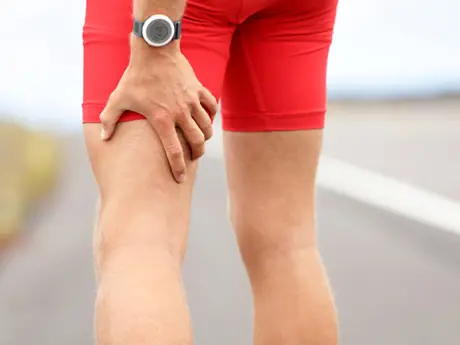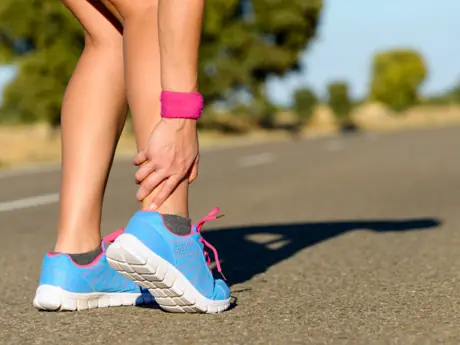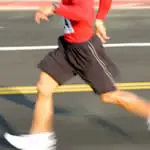
When you think of a hamstring injury, you may picture a sprinter motoring down the homestretch of a race and suddenly lurching in pain, grabbing the back of his leg and stuttering to a halt. While hamstring strains, sprains and tears do happen, it's less common for distance runners. The velocity that is required to cause that kind of acute injury generally occurs via quick, forceful movements. For the greater running population pounding out longer miles on roads and trails, high hamstring tendinopathy (HHT) is a more widespread issue.
Considering the hamstrings play a big role in the gait cycle, it's hard to ignore HHT. The hamstring muscles run from behind the knee, attaching at the femur and the pelvis. It is the attachment to the latter near the ischial tuberosity or "sit" bone that HHT occurs. The pain and discomfort resulting from this type of injury materializes deep within the glute muscles.
More: 8 Exercises to Strengthen Your Hips, Hamstrings and Glutes
"HHT presents as an annoying intermittent sharp pain and dull ache clear up in the buttock region right on the ischial tuberosity," explains Amy Parkerson-Mitchell, a physical therapist, RRCA-certified coach and owner and coach of Personal Best Running and Fitness in Kansas City.
"Usually the pain starts at the beginning of the run, settles down as you warm up, and then returns later in the run," says Parkerson-Mitchell. "After the run, it tends to present as a dull ache that is different from normal workout soreness."
More: Running Hamstring Injuries FAQ
What Causes Hamstring Tendinopathy
Training errors can be one cause of HHT. Introducing speed work or hill repeats is often problematic, as well as doing any high intensity workouts without warming up properly.
Wendy Rhodes, a physical therapist and running coach based in New York City, says that physiology can also play a role. "This type of injury can be caused by intrinsic factors like pelvic obliquity or one side of the pelvis being 'off,' gluteal or butt weakness, or hamstring or core weakness," she says.
More: Build Pelvic, Ab and Lower-Back Strength to Prevent Injury
- 1
- of
- 2
About the Author

Get ACTIVE on the Go


Couch to 5K®
The best way to get new runners off the couch and across the finish line of their first 5K.
Available for iOS | Android








Discuss This Article